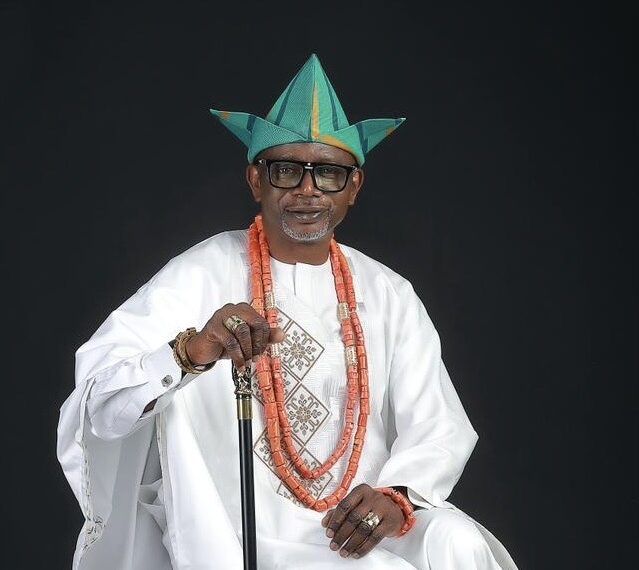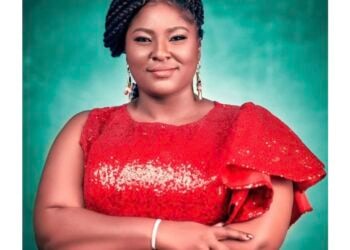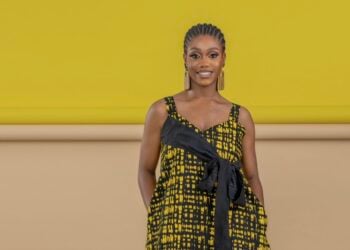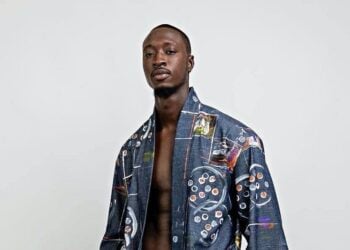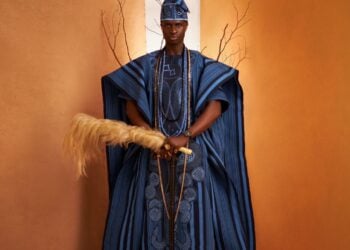The king of couture Adebayo Jones who recently turned 60, continues to reign supreme in the fashion industry with his timeless and luxurious designs. Celebrated for his unmatched elegance and creativity. Jones remains a source of inspiration for many. In an exclusive and insightful interview we had the privilege of engaging with Adebayo Jones to discuss his remarkable journey, the influences that have shaped his legendary career, and the passion that drives his ongoing success.
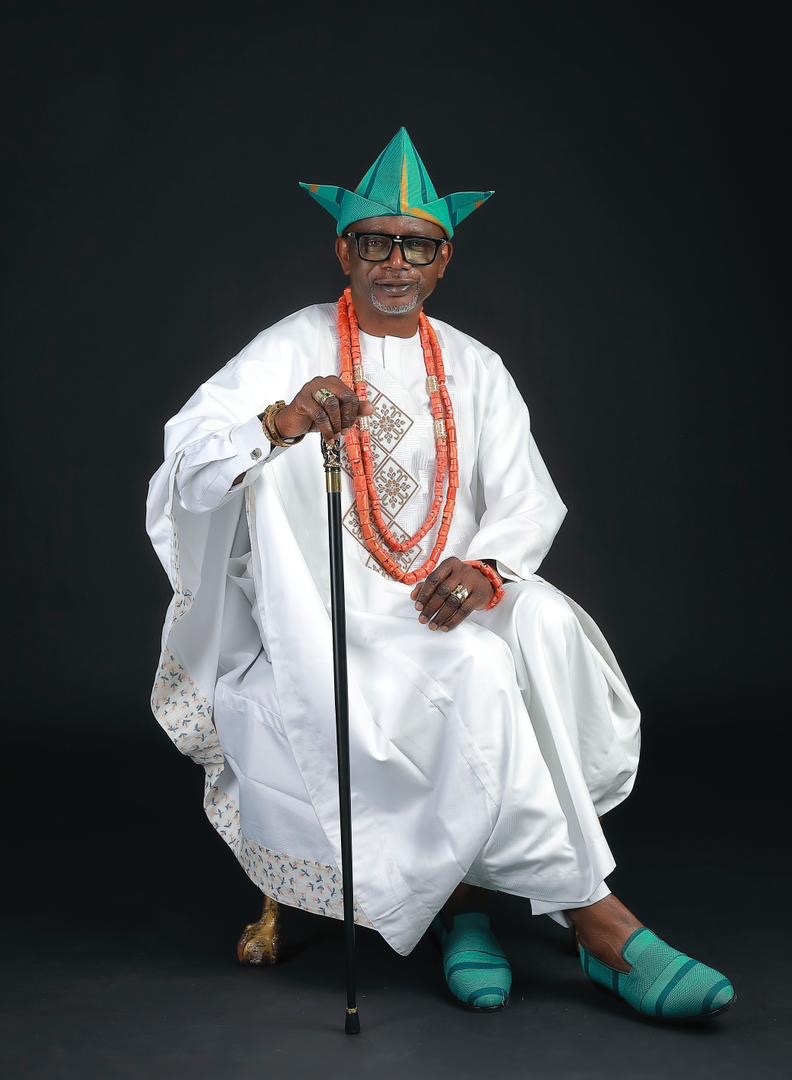 With over 30 years of experience in the fashion industry, how have you been able to keep evolving and maintaining your relevance?
With over 30 years of experience in the fashion industry, how have you been able to keep evolving and maintaining your relevance?
Progress is impossible without change, and those who cannot change their minds cannot change anything. Life is a moving, breathing thing, and with life as a creative, the designer needs to keep evolving and innovating on one’s craft and the ethos that define the establishment. Seasons come and go; the world is not a static place. Though it is now a global marketplace, change is an unavoidable fact of living.
Trends and tastes are constantly changing. People’s needs, desires, expectations, and values are all subject to change, and many factors that guide the decisions of what is designed and offered to specific fashion target markets are affected by change likewise.
With well over 35 years in the fashion industry, the necessity for a designer to evolve with the times, innovate, invent, stay alert, and be competitive in their field is of utmost importance. Staying relevant in an industry requires a commitment to lifelong learning and staying up to date with the latest trends, technologies, and best practices through continuous learning. Embracing innovation and creativity, and being willing to explore new ideas, and take risks have helped tremendously in differentiating myself from the competition and staying ahead of the curve in the ever-growing fashion industry.
Establishing a strong professional network and maintaining influence in an industry often involves building and nurturing of relationships with key industry leaders, peers, and stakeholders. This network can provide valuable insights, support, and opportunities for collaboration. Establishing relationships, keeping them, and nurturing them over the years have been of tremendous value, and have helped keep one in the limelight and relevant for almost four decades. The unsavoury habit and attitude of using and dumping contacts to one’s benefit will not prove to be an alluring character trait for anyone.
Establishing oneself as an expert in a particular area through thought leadership, speaking engagements, publications, fashion shows, and other forms of content has also helped to maintain influence in the industry through the years. Finally, providing valuable products, services, insights, and solutions is essential for maintaining influence and has tremendously helped to keep one relevant in the industry over the long term.
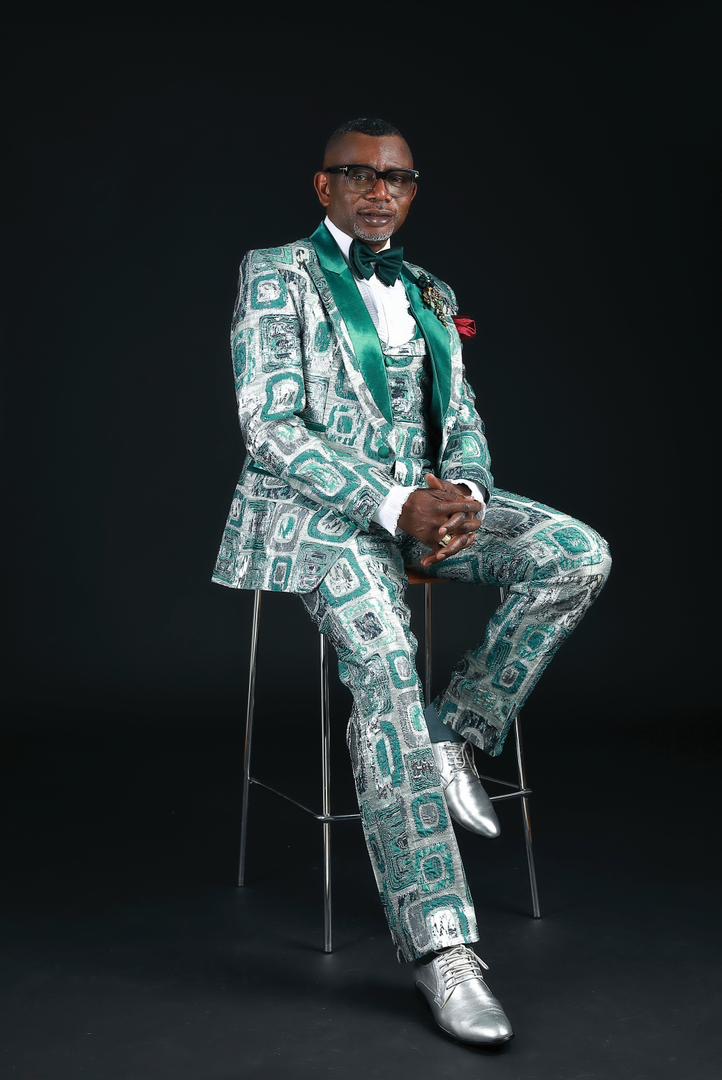
As a Nigerian-born designer based in England, how has your African heritage shaped your design aesthetic?
One is a summation of one’s heritage and every influence that has shaped the person’s life since birth. One’s heritage can play a significant role in shaping the work of the creative, providing a source of inspiration, cultural perspective, and personal identity. Artists and creators alike always draw on their heritage to explore themes, motifs, textiles, and traditions that are meaningful to them and reflect their cultural background.
Heritage influences the style, techniques and subject matter of one’s work as well as the message in a collection that one is trying to convey. In some cases, it may involve traditional symbols, colours, and narratives. These influences can even be used to address social or political issues that are important to the designer or the community where one is based.
Additionally, one’s heritage provides a sense of connection to one’s roots and can be a source of pride and identity. It is a powerful motivator for me to explore, express, preserve and celebrate my heritage through creative work. Over the years since the 1980s, I have been notably recognised for championing using Indigenous cloths, textiles, and patterns creatively and passionately in my design work. It is always with pride that one explores the concepts and stories behind one’s creations, particularly those that have been largely impacted by the creator’s heritage.
Can you share a pivotal moment in your career that significantly influenced your journey in fashion?
I graduated from the University of Ife in 1985 and enrolled at the Central School of Fashion in London to pursue my passion fully. I studied history and sociology at the university and was already known as a designer on campus back then. We hosted several fashion shows on campus during special events. In 1987, I read in a magazine that a Nigerian had opened a shop on New Bond Street called “Talala” (for dreamers). The owner of this establishment was none other than Nigerian businesswoman, socialite, and traditional aristocrat, HRH Erelu Kuti IV of Lagos, Chief Abiola Dosunmu.
I was in awe of her and made up my mind to work with her and learn, as I was a student at the fashion college in London back then. I made it a habit of going to the shop after classes, asking her manager, Tara, if I could see her, expressing my admiration for what she had done, and also if I could get an opportunity to learn. Unfortunately, most times Erelu Dosunmu was away until this fortunate day, when the manager Tara said: ‘You are lucky today; she is around and will see you. I was ushered downstairs to Erelu’s office, and there she was sitting majestically, elegantly attired, looking every inch like the royalty she was. After being introduced, I showed her my portfolio. She smiled and asked me what I would like her to do for me. I told her I just wanted to work with her and learn. Erelu Dosunmu listened and took me on. This was the beginning of what greatly influenced my passion for Nigerian textiles. Erelu Dosunmu, I don’t think, has received recognition for the innovation, inventions, and creativity she introduced using Nigerian textiles like aso-oke and akwetey textiles, for example, in making coats, jackets, suits, and evening gowns embellished with embroidery, hand beading and appl iques for an international audience. This was new Bond Street, and the clients were always captivated by the creativity, flair, and sumptuous designs offered, superbly tailored and delectably alluring. I was always blown out of my mind by Erelu’s creativity, and a lot of the innovations she introduced back then are influences that are springing up now. By the time I graduated from fashion college, I had been exposed to many influences, ideas, and innovations, and all of these went on to shape my work in the future. I will always appreciate the opportunity given to me back then and how I was able to draw on the experiences later on as a creative.
Your designs are renowned for their elegance and opulence. What inspires your creative process for each collection?
The ethos of my work creatively is on fine lines of timeless, classically designed garments, expertly tailored in rich, luxurious, sumptuous fabrics like silks, crepes, satins, jacquards, brocades, velvets, laces, and the Nigerian traditional hand-woven indigenous cloth like aso-oke, etc. The collections are designed to withstand the fast seasonal changes within the fashion industry and to instil confidence in the wearer, as confidence radiates when one looks and feels good about oneself.
Every collection is influenced by a theme or a thought. A designer draws from personal experiences—their own unique life experiences, including relationships, successes, challenges, and personal growth. Most of these influences are also drawn from travels, visits to museums, research, things we have seen, books one has read; and, of course, one’s heritage and culture play an integral part in creating a collection that influences one creatively by providing a backdrop of ideas, trends, and values to draw from.
For me, the beauty and wonder of the natural world can serve as a powerful source of inspiration, sparking creativity and new ideas. Also, I find that interacting with other creatives can provide inspiration, feedback, and new perspectives on the creative process.
It is usually priceless to guard and maintain a healthy balance of one’s emotions. The emotional state and mood of an individual can greatly impact one’s creative output, as different emotions will inspire different types of art. I also find that music, literature, and other art forms like visiting museums can spark creativity and astonishingly influence one’s work. Travel and new experiences, exploring new places, cultures, and experiences can provide fresh perspectives and inspiration for creative work. For this reason, I love to travel, and I use these mediums largely for my creative work.
Advancements in technology and new creative tools also provide exciting new possibilities for artistic expression and influence in my work. I have a keen interest in technological advancements in textiles and the fashion industry. I am always keen to see how these advancements can trigger new thoughts, ideas, and possible collaborations, which would allow me to not only be creative but also stay competitive in the industry.
What challenges did you face when you first started in the fashion industry, and how did you overcome them?
Starting, I was self-funded. I had always loved rich, sumptuous fabrics, some of which were out of my way in terms of what I could afford. I would go to high-brow shops like Joel & Sons and look at the laces and other beautiful, exquisite fabrics in the store. I was able to dream. This was a good place, and I was able to think creatively by buying what I could afford and taking the fabrics back home, laying them on the table, looking intently, and thinking: how can I make this fabric richer and more elegant and luxurious? This triggered creative thinking, as I would add ribbons, trimmings and beadings, and transform the fabrics into what I envisioned. Soon I would be known and described as the designer famed for creating his fabrics. I was able to transform a challenge into an advantage through creative thoughts.
Secondly, we started in the 80s. There were no mobile phones, social media, or the internet, which are tools that have transformed lives and careers presently. I did not have a bank of PR and marketing teams at my disposal. I had to get the collections ready and then do the PR myself. It involved going out, meeting people, introducing myself, and then writing countless letters of introduction and requesting the editor to publish my work. It wasn’t always easy, as it required one to keep calling, writing, and waiting anxiously to see if the feature was going to come out. However, the resilience paid off, and the features came one after the other. After a while, a powerful network of editors, stylists, writers, and industry professionals was established, and these contacts were instrumental in bringing the Adebayo Jones name and brand to public consciousness. There were features from The Voice Newspaper, New Nation Newspaper, Pride Magazine, Ovation Magazine, Black Beauty & Hair, etc., amongst others. Fortunately, most of these contacts who supported the vision back then in the 80s are still friends and contacts today.
You are referred to as the King of Couture; how did that nickname come about?
I have always loved couture. My early influences were in haute couture. It is the creative art form that allows one to express oneself creatively, showing flair, depth, innovation, skillsets and opulence in one’s work. Back then, in the 80s, I did a lot of fishtail skirts, voluminous opera coats, lots of corsetry, and many other grand ideas. I recall two opera coats in gold and silver lurex tulle imported from Austria. Each coat had layers of tulle with long trains, and we used about sixty metres of lurex tulle for each coat. There were tulle skirts made in layers of tulle and boned bodice corsets with beaded detailing.
A journalist had written an article at the beginning of the 1990s entitled “King of Couture” by Adebayo Jones. Then the next article was written and captioned the same way, and it went on from there. Ovation magazine published by Chief Dele Momodu has many beautiful features as well and has been strategically instrumental to the growth and popularity of Adebayo Jones in the past and present. In Nigeria, very early 90s fashion journalist Tunde Renner did a beautiful spread and feature in the newspaper. This Day Newspapers, during This Day Style and Fashion Weekend in 2006, featured Adebayo Jones on the cover of the magazine with the title “King of Couture “. Vanguard Newspaper magazine also did a lovely cover feature afterwards.
Soon, it became the word and the term by which the designer would be known. Newspapers, magazine features, and TV and radio interviews all had the same introductions, and before long, the title became synonymous with Adebayo Jones in England, North America, Nigeria, and other areas.
What do fashion and style mean to you personally, beyond being a professional pursuit?
Fashion is what we buy, and personal style is what we do with the bought items. I believe that personal style is a very powerful tool and medium for self-expression and goes beyond trends, imitating others, or losing the essence and uniqueness of one’s most precious asset, one’s individuality. Style is something that each of us already has. We only must find it and evolve our very own uniqueness through personal expression.
Most evolve into their style naturally, while some need some form of guidance and support to find their own space and style. Personal style is a way of saying who you are without having to speak. This is about embracing who we are as individuals and showcasing our styles through the fashion choices we make. One’s fashion identity should reflect their personality. One should consider the personality traits that define one and how these qualities are interpreted aesthetically. Clothes are an extension of who we are. I love being classic but with an edge. I like being open to experimentation, frequently stepping out of my comfort zone, and not being afraid to try new things, which I feel my personality can confidently carry without feeling overwhelmed. Experimentation is important to finding one’s fashion mix, and therefore I am open to trying out new ideas and exploring different styles. Accessories play a big role in my personal style choices.
I hardly leave home without a neck scarf, so I have a vast collection of scarves. Jewellery accessories are vital to my personal style choices. I accessorize with a brooch most times on my jackets, and it has become a fashion staple for me. Gold is my all-time favourite colour, and I do have a small collection of gold leather slip-ons and lace-ups.
I find that defining and owning one’s own fashion identity is a journey that takes time and evolves into a comfort zone where the individual now readily embraces their individuality confidently through curating a wardrobe that reflects one’s style.
What advice would you give to young people aspiring to make it in the competitive world of fashion?
Stay open-minded and be willing to learn. The creative space is constantly evolving, so it is important to be receptive to new ideas, techniques, and perspectives. The young designer should embrace challenges and seek out growth opportunities.
Cultivate your craft and invest time and effort into honing your skills and developing your unique styles. Practise regularly, experiment with different mediums, and seek feedback to help improve your work. Network and collaborate by building relationships with other creatives that can open new opportunities for inspiration, collaboration, and exposure. Attend workshops, events and exhibitions to connect like-minded individuals and share your passion for creativity.
Stay inspired by surrounding yourself with sources of inspiration, whether it’s art, music, literature, nature, or travel. Take time to explore new experiences. Take time to explore new experiences and ideas that will fuel your creativity and imagination to keep flowing. Be persistent and resilient, as the creative journey can be challenging and unpredictable, so it is important to stay determined and resilient in the face of challenges, setbacks, and rejection. Trust in your abilities and stay true to your vision, even when faced with obstacles.
Stay true to yourself, and don’t be afraid to showcase your unique perspective and voice in your work. Embrace your individuality and use it to set yourself apart in the competitive creative space. Stay true to your values and artistic integrity and let your authentic self shine through in your creations.
How do you stay inspired and motivated after so many years in the fashion industry?
As a creative who has been in the same industry for many years, staying motivated and inspired can be a challenge; however, with good strategy, one can keep one’s passion alive. It is of uttermost importance to set new goals and strategies for oneself. One cannot stay comfortable on the laurels of past achievements. Setting new goals and strategies will give one a new sense of purpose and direction in one’s work.
As a designer one should continuously be open to learning and growing by staying curious and being open to learning new things in the industry by attending lectures, seminars, workshops, or industry events to stay up-to-date on the latest trends, developments, and advancements, which are evolving constantly.
The importance of networking, collaborating, and connecting with other professionals in one’s industry cannot be overemphasised. This involves connecting with professionals within and outside of one’s industry and organisation. Collaborating with others can spark new ideas and inspire one to think differently about one’s work. As a designer, I must constantly find meaning and purpose in my work. To remind myself of the impact my work has on others and how it contributes to something bigger than myself. I am passionate about mentoring, lifting others, and raising champions. Finding meaning and purpose in one’s work can help keep a creative person motivated and inspired.
It is essential to take breaks and recharge to give oneself time to rest, refresh, and be re-energised. The creative industry, particularly fashion, comes with a lot of stress most times, and resting to recharge can help prevent burnout and give one a fresh perspective on one’s work.
I believe one should celebrate one’s accomplishments, as one must learn to appreciate the stages of growth and celebrate the moments while still on the journey. It is like climbing a summit, one should stop, look, and appreciate each vantage point. At times, seeking feedback from industry peers and mentors can also help bring new ideas and perspectives to one’s work. Recognising your achievements is not necessarily a prideful exercise, and can boost one’s confidence and motivation.
I do my best to reflect on why I chose to enter the industry in the first place and what excites me about my work. I find that keeping my passions and values in mind helps to reignite my motivation.
Staying motivated after many years in the industry requires intentionality and a commitment to personal growth. By incorporating these strategies into one’s daily routine, one can continue to find fulfilment and excitement in one’s work.
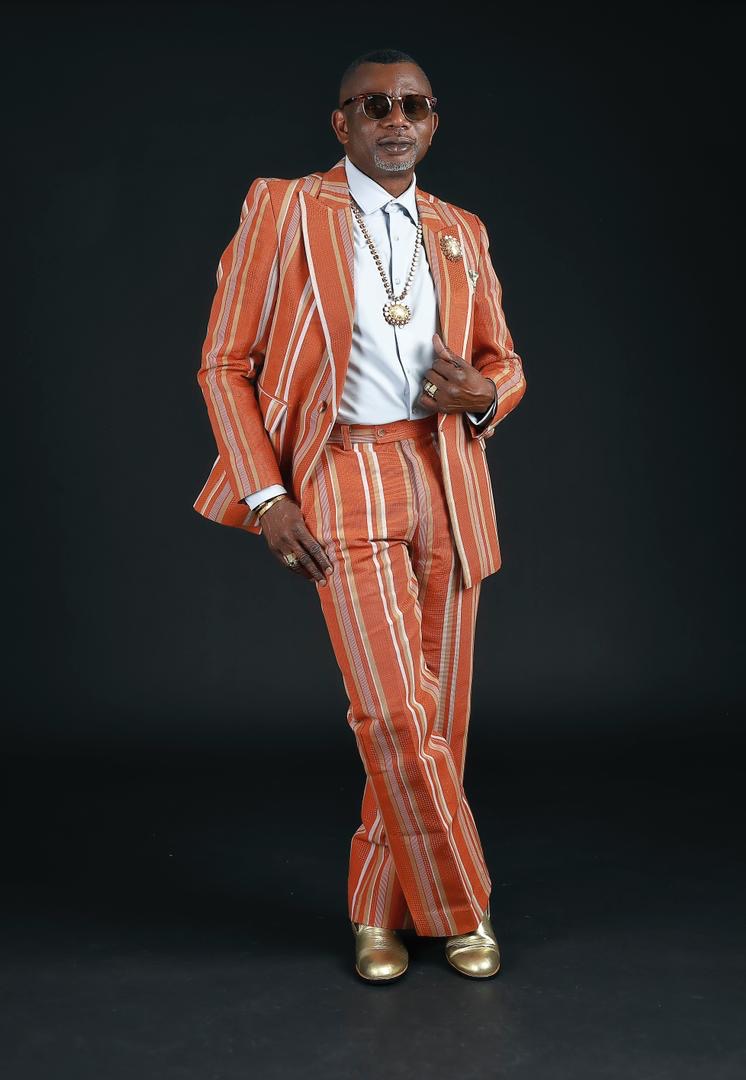
In your opinion, what is the most critical quality a fashion designer should possess?
I believe the most critical quality a fashion designer should possess is resilience. Starting and growing a business can be challenging and fraught with obstacles, setbacks, and failures at times. Without determination and resilience, it can be difficult to preserve yourself through difficult times and stay committed to achieving goals.
Creativity requires taking risks. Taking risks is the determining factor between a purposefully driven and successful life, the difference between an extraordinary life and an ordinary life. To take risks, one must be resilient. Facing rejection, dealing with failure, and having plans not go according to anticipated projections can be discouraging. Entrepreneurs need to be driven with passion to overcome obstacles, take risks, and keep pushing forward.
A determined and resilient individual will be able to bounce back from setbacks, learn from their experiences, and continue to pursue their creative endeavours with determination and perseverance. Without resilience, the designer may give up easily, particularly when faced with challenges that they may find crippling, hindering their ability to succeed in their field.
How do you handle the pressures and expectations that come with being an award-winning designer?
Coping with the pressures and expectations of a designer can be very challenging. However, setting some guidelines for oneself can enable one to deal with and cope with the challenges that come with the role.
One must first set realistic expectations and goals for oneself, as it is very important to set realistic goals for one’s business. This helps me manage expectations and lessen the pressure I feel. It is vital to surround oneself with support and build a network of mentors, advisors, and peers who can provide guidance and support during challenging times.
As a designer, I do my utmost to take care of my physical and mental well-being by getting enough sleep, exercising regularly, eating well, and taking breaks, when needed, to refresh. If the creative is burnt out, and not physically and mentally maintained, the creative flow cannot be at its best. I find focusing on what one can control by identifying aspects of the business one can manage effectively and working to improve those areas vital. Let go of things that are beyond your control. Get help and the right support for areas you cannot manage professionally.
Failure, as we all know, is a natural part of entrepreneurship, so one must not be afraid to take risks and learn from one’s mistakes. As a designer, it is wise to use failures as opportunities for growth and improvement by learning from them.
Maintaining a positive attitude and mindset even in the face of challenges is key. No matter the challenges, one must never lose belief in oneself or their vision. This will enable one to stay motivated and focused on achieving their goals. It is always a good idea to seek feedback from clients, employees, and other stakeholders to understand how one can grow and improve one’s business. Coping with pressure and expectations as a designer requires a combination of resilience, self-care, and a strong support system that enables one to manage the demands of designing and entrepreneurship successfully.
It was your birthday recently. At over 60 years of age, what advice would you offer to young people striving for success?
One is eternally grateful to God for life, the blessings, the great times, and the not-so-great moments, too, for, in all, God takes all the glory, as only God preserves and does so for a purpose. I am eternally grateful to have a dream and the opportunity to live the dream. My dreams have been preserved by grace. I look forward to many more years of doing what I love, achieving more of the vision laid out, and being able to inspire and support young upcoming designers.
To the young people striving for success in the fashion industry, I would offer the following advice: First, study to show that you are approved in your craft. If you want to be in an industry, then study, learn, or gain an apprenticeship from industry experts. One needs to be skilled, informed, and aware of how things come together technically. This helps raise awareness of patterns, shapes, textiles, what goes best with what, and the technicalities of design decisions and silhouettes. It may be fine for some to just sit with pages of fashion magazines and lift what others have done, but this is hardly going to set one apart distinctively as a talented designer and artisan. Be consistent, as this is key when trying to establish yourself in any creative industry. Set goals for yourself and work hard, consistently, towards achieving them.
Find a mentor; find yourself a seasoned and experienced industry professional to mentor and guide you. Their experience is a treasure chest that can help, serve, guide, and enable one to avoid very costly entrepreneurial mistakes and decisions that may cripple one’s vision and journey as a creative. More so, mentorship can enable one to see firsthand how the industry operates, including skill-sets, ideas, and processes that one may not be exposed to otherwise. What I experienced as an intern in the 80s still influence my work to date.
Build relationships and explore collaborations with other creatives within the industry. You don’t have to do everything yourself. Focus on your area of strength and keep developing in that area. If you are a brilliant designer and you meet someone brilliant at making jewellery, look for ways of collaborating and exploring how both of you can work together to benefit your individual goals and objectives.
Keep learning; as the fashion industry is constantly evolving, so it is important to stay up-to-date with technologies, techniques, new trends, and textile advancements. Take classes, workshops, and online courses to continue to expand your skill-set and knowledge.
Taking risks is an integral part of the entrepreneurial journey. Don’t be afraid to take risks, try new ideas, and step out of your comfort zone to grow as a designer. Don’t be afraid to take on new projects or to collaborate with others who have different perspectives and skill-sets.
Learn the priceless virtues of patience and persistence on your creative journey. Building a successful career in the industry takes time and effort. It is therefore important to be patient and persistent in your pursuit of your goals, even when faced with challenges or setbacks. Focus on your journey and avoid making comparisons with others on their path.
Make sure to create a strong online presence and portfolio. Showcase your work on social media platforms to attract potential clients. A strong body of work will help to establish your credibility and reputation in the industry.
Finally, be original. Define the ethos that represents you as a designer and what will make the prospective client exchange money for the value of your products. Find your voice, and shy away from losing your originality creatively. You were not created to be a copy of anyone, though you can be inspired by what other industry greats have done.
Study, research, and experiment with new thoughts and ideas. Your ideas might not be most welcome when first introduced, but sticking to your guns and gut feelings, the idea might, in the long run, prove revolutionary. Just like fashion greats like Dior with the New Look, and YSL with the female tuxedo were able to introduce and innovate new ideas that left lasting legacies and revolutionised the fashion industry, the next fashion great revolutionary might just be you. The world awaits your creativity, innovation, and inventions, so go on and do just that.

